-
×
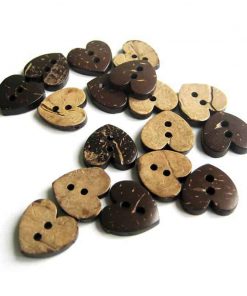 15mm Heart Coconut Button
1 × £2.00
15mm Heart Coconut Button
1 × £2.00
Subtotal: £2.00 (incl. VAT)
Nuts are a lovely way to add protein and those healthy fats that keep your cholesterol well-balanced to your diet. A handful as a snack can do the trick.
But if you regularly replace meat and dairy with nuts, you are also considerably lowering your impact on the environment (not to mention saving animal lives).
As promised, here are some tips and recipes to add more nuts to your diet, be it savoury dishes, sweet snacks, bakes or drinks!
Save to say: we love a good peanut sauce.
Did you realise this sauce actually counts as a protein replacement?
With, for example, this Indonesian inspired Gado Gado, you have a healthy dinner, which can be easily adjusted to personal tastes and availability. It also works really well as a party or picnic dish.
(And we’re not denying peanut sauce also pairs beautifully with satay chicken, which has a relatively low environmental impact compared to other meats. But it’s also great on fries, or fried tofu, or … well, you know what you like!)
Take
Sauté onions, garlic and galangal/ginger in a saucepan, and then simply add everything else, and heat while stirring.
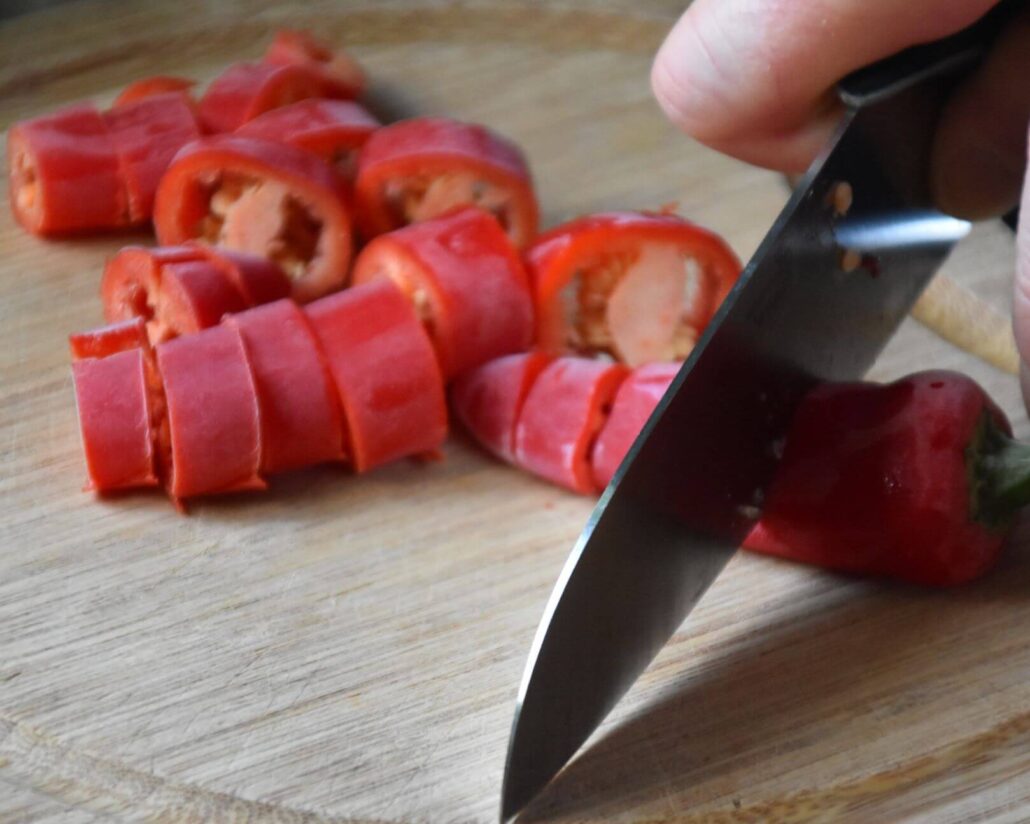
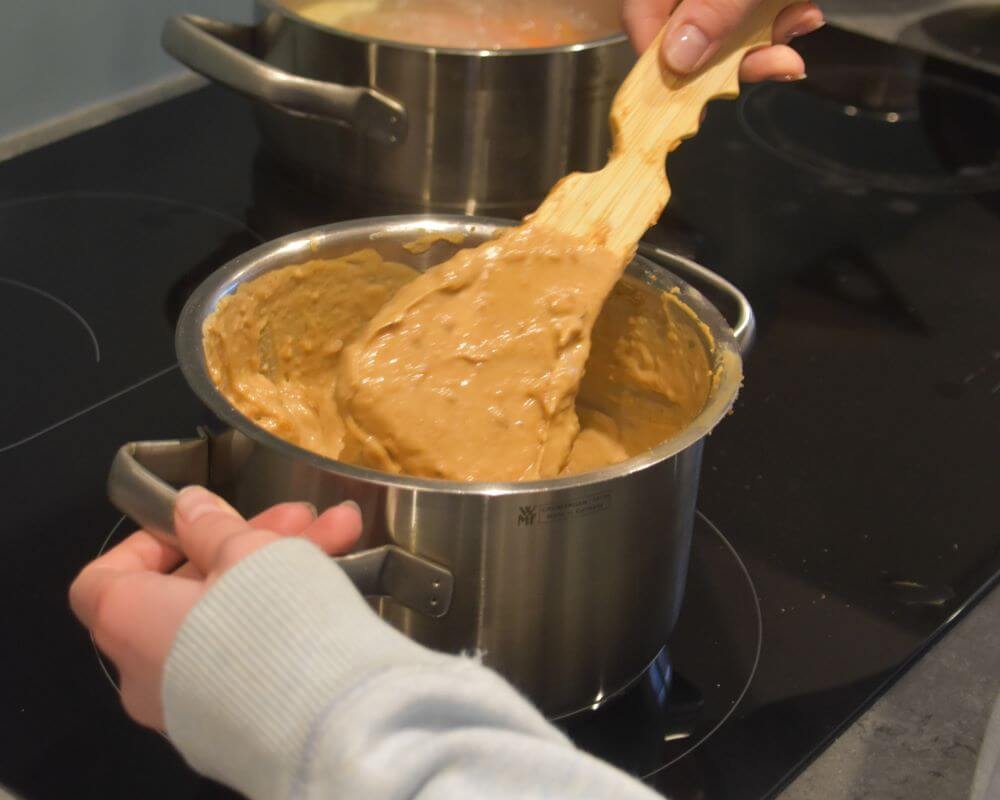
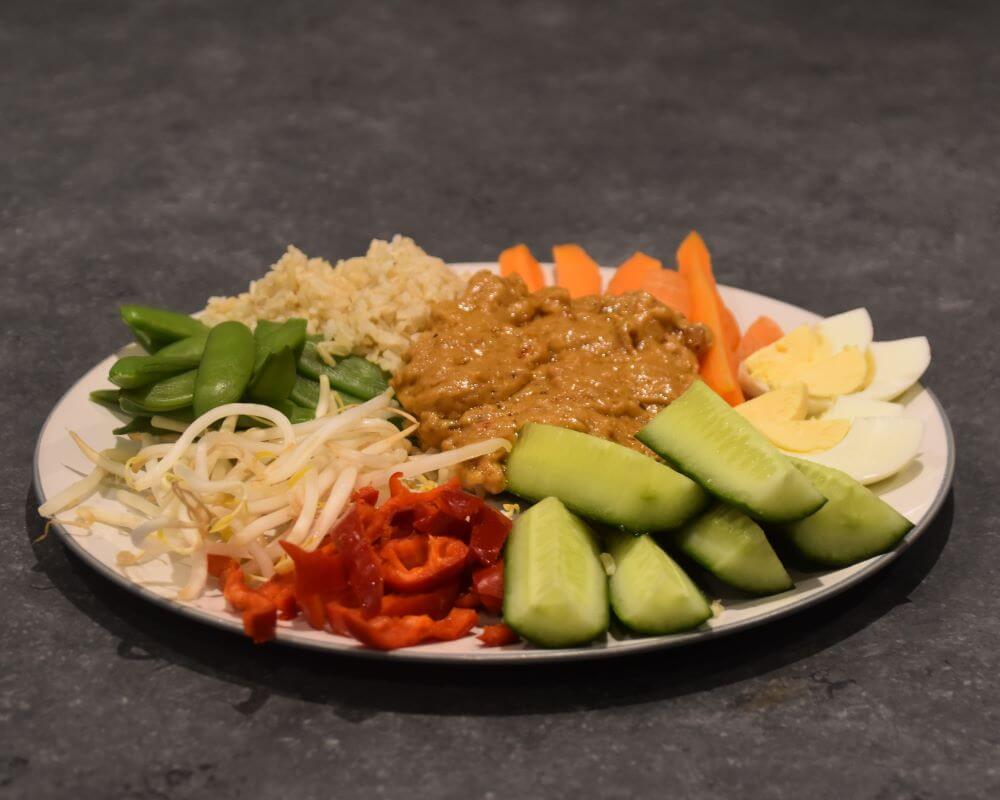
One would typically arrange rice and an array of very shortly boiled (and raw) vegetables around a plate and serve with a good dollop or small bowl of peanut sauce in the middle. Traditionally, hard boiled eggs and prawn crisps are included, but these can easily be left out or replaced with fried tofu, if you want your meal to be vegetarian or even vegan.
As vegetables we suggest (in the amounts that seem reasonable to your party’s tastes and appetites)
But feel free to add what seems good to you and leave out what you don’t like!
Boil the beans and carrots al dente in a few minutes. Whether or not you shortly cook the bean sprouts and cabbage is up to you. (You can also soften the raw cabbage by mixing it with lime juice an hour in advance.)
The vegetables can be prepared ahead and enjoyed cold just as well. The sauce is best eaten warm, though.
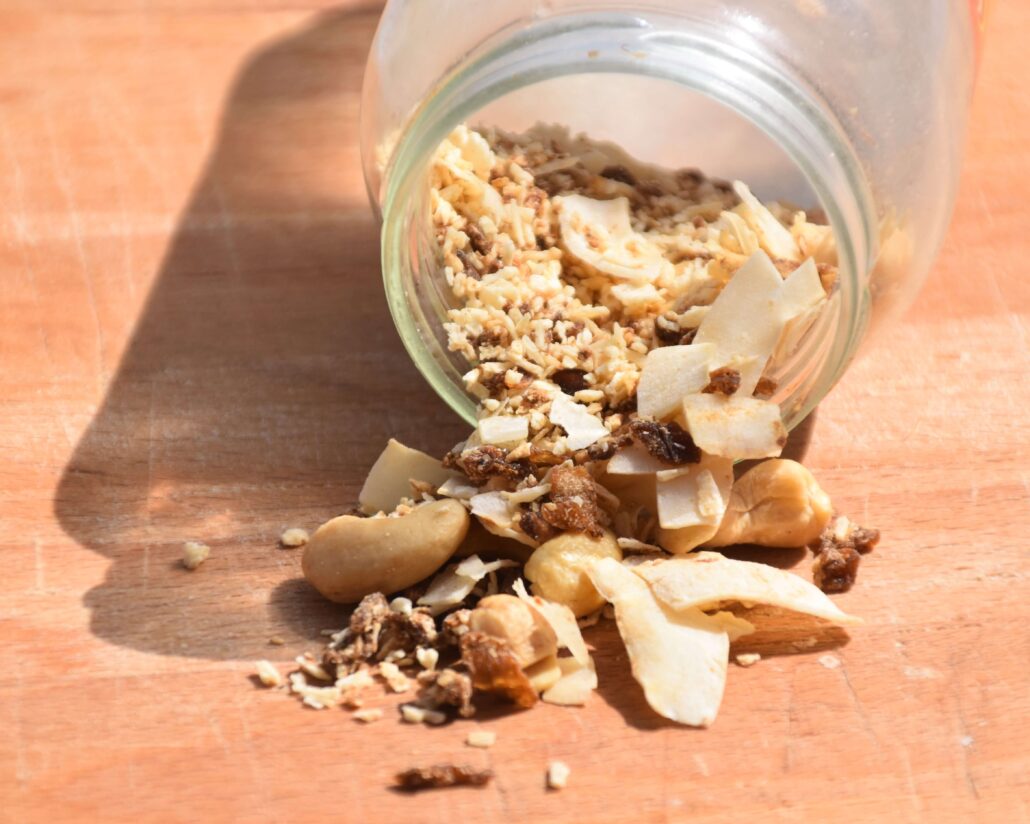
Another easy but less known way to add that bit of healthy protein to your meal is seroendeng, or serundeng.
This is a traditional Indonesian accompaniment to rice, made of peanuts and grated coconut. Recipes vary from family to family (from quite spicy to almost sweet), so feel free to experiment with the spicing to make your own preferred blend.
I use a bit more peanuts than usual, to make it a proper protein-replacement. These can also be (partially) replaced with pecans.
Ingredients:
How to make your serundeng:
A spoonful or two adds lovely flavour and texture to steamed, boiled and fried rice. But it can also give vegetables such as green beans, cabbage and leeks and interesting new Asian touch. Sprinkle over your food generously regularly, to help keep your protein intake sufficient!
You can reduce your dairy intake by making your own nut milk. And with a nutsack that actually becomes quite easy.
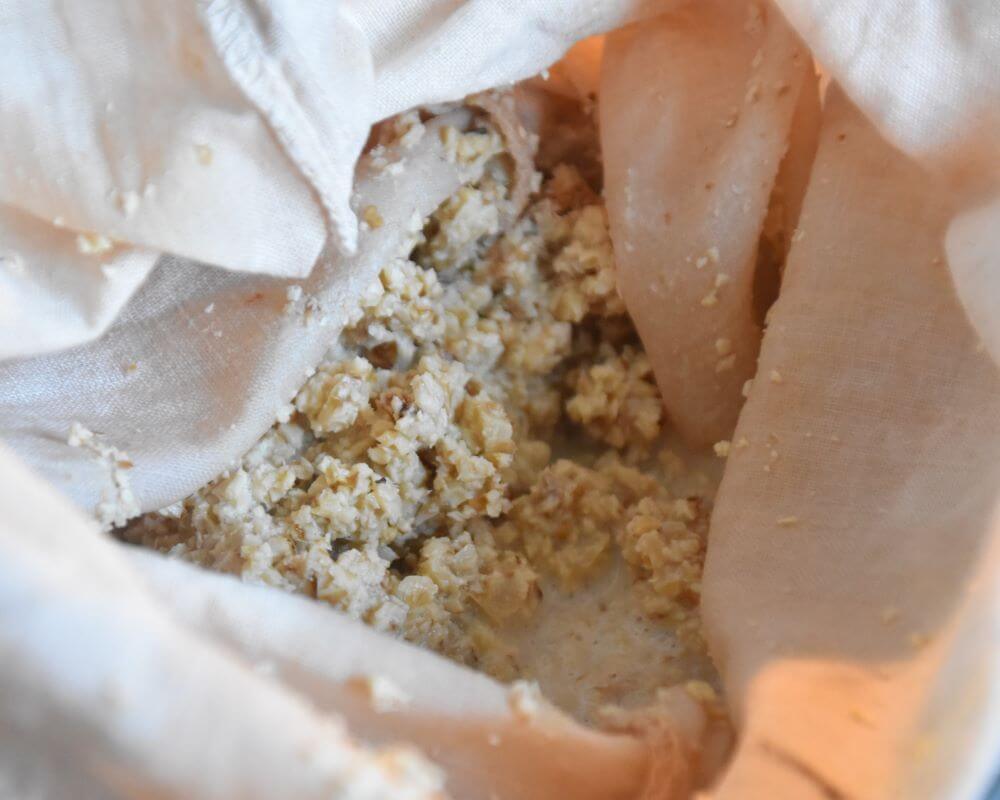
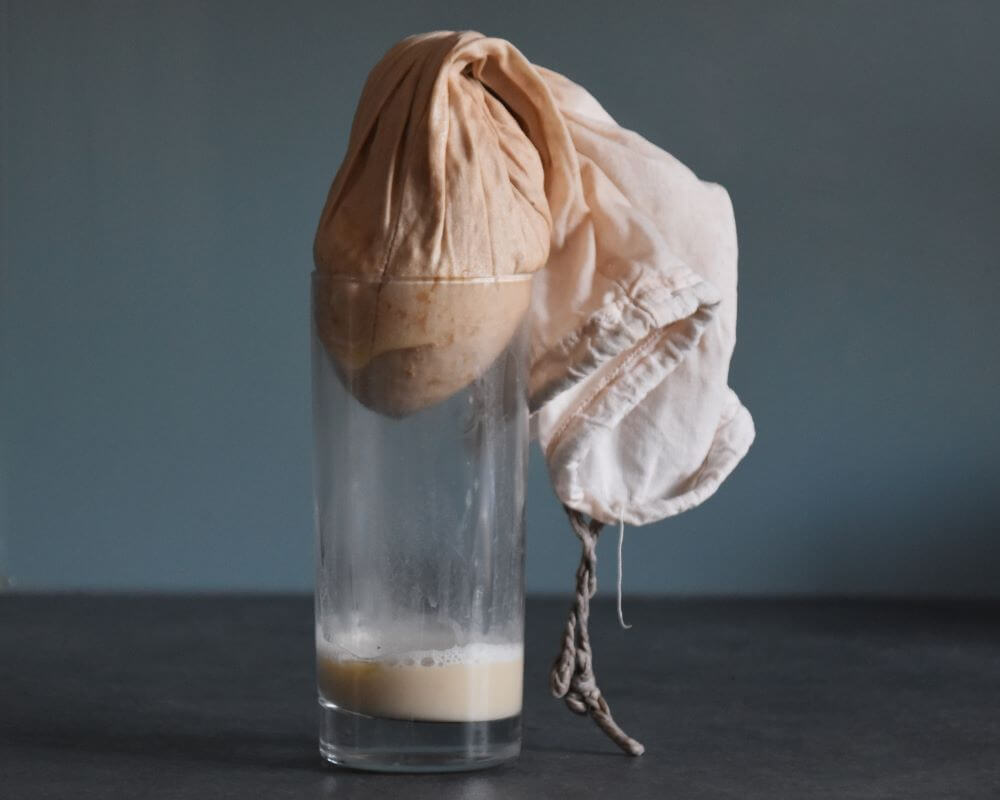
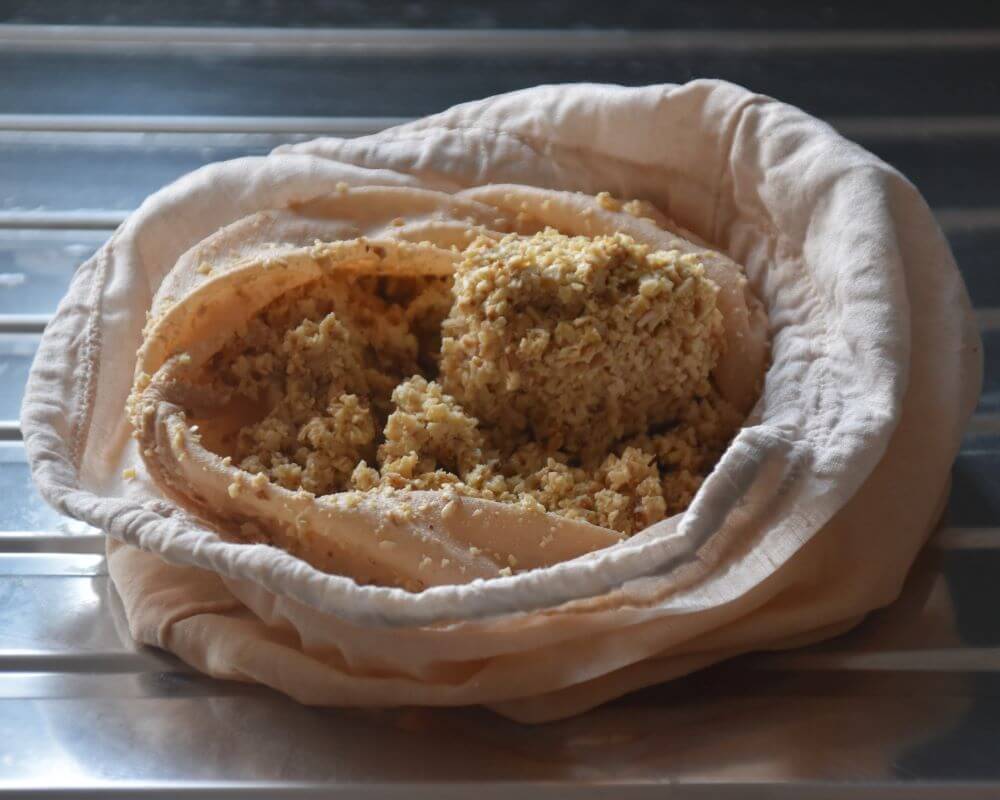
– Take 500 gr. of nuts of your liking (really, all nuts go) (and you can add seeds as well).
– Soak them in water until softened (about 8 hours should be fine for most, though some types, like cashews and pecans, are typically done within 2).
– Rinse thoroughly and add 500 ml of water.
– Blend.
– Pour into your Nut Sack and squeeze out as much as you can.
– add water, if you like your milk a bit thinner.
– add a pinch of salt to enhance flavour.
– sweeten with honey, agave syrup, coconut sugar, or whichever sweetener you like.
– add flavour in the form of cinnamon, vanilla, or cacao.
– go a bit more adventurous and add things as cardamom, ginger, all spice or turmeric.
It is your milk, after all. Make it your own!
And don’t throw out the leftover nut pulp.
The nut pulp that is left over when you make your own nut milk can be used in all kinds of cooking and baking. It can, for example, be used as a mince substitute in pasta sauces and such.
You can use it in baking things such as biscuits, muesli bars and rich filled fruit loafs, but also to add just a bit of bite and nutritional value to your home baked bread, or pizza dough, to name a thing.
And it doesn’t have to be used instantly, you can dry (at low heat in the oven) it and then further grind it into a flour-kind substance, that you can keep a while.
Enjoy!
And let us know in the comments what your favourite ways of enjoying nuts are …
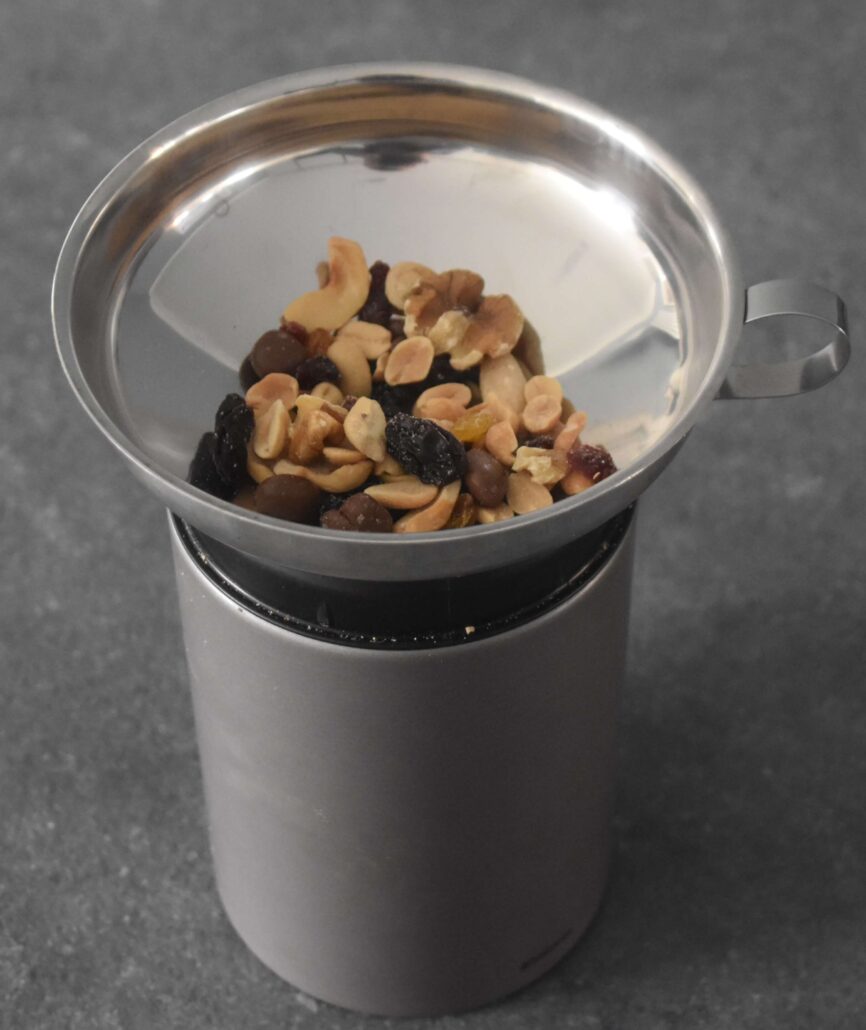
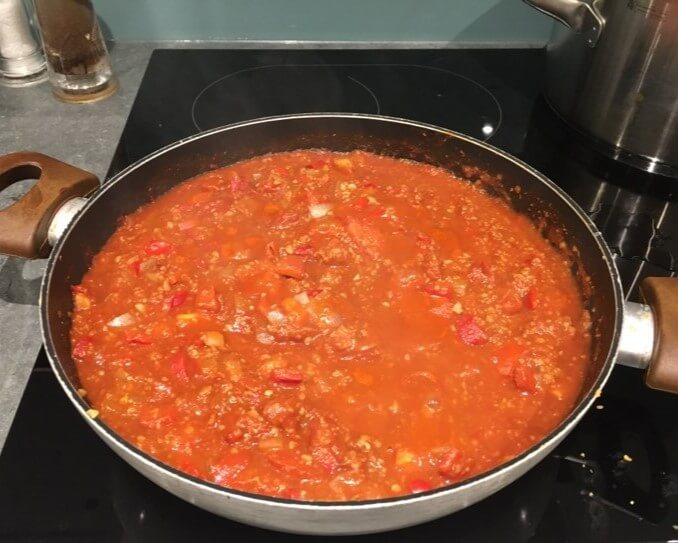
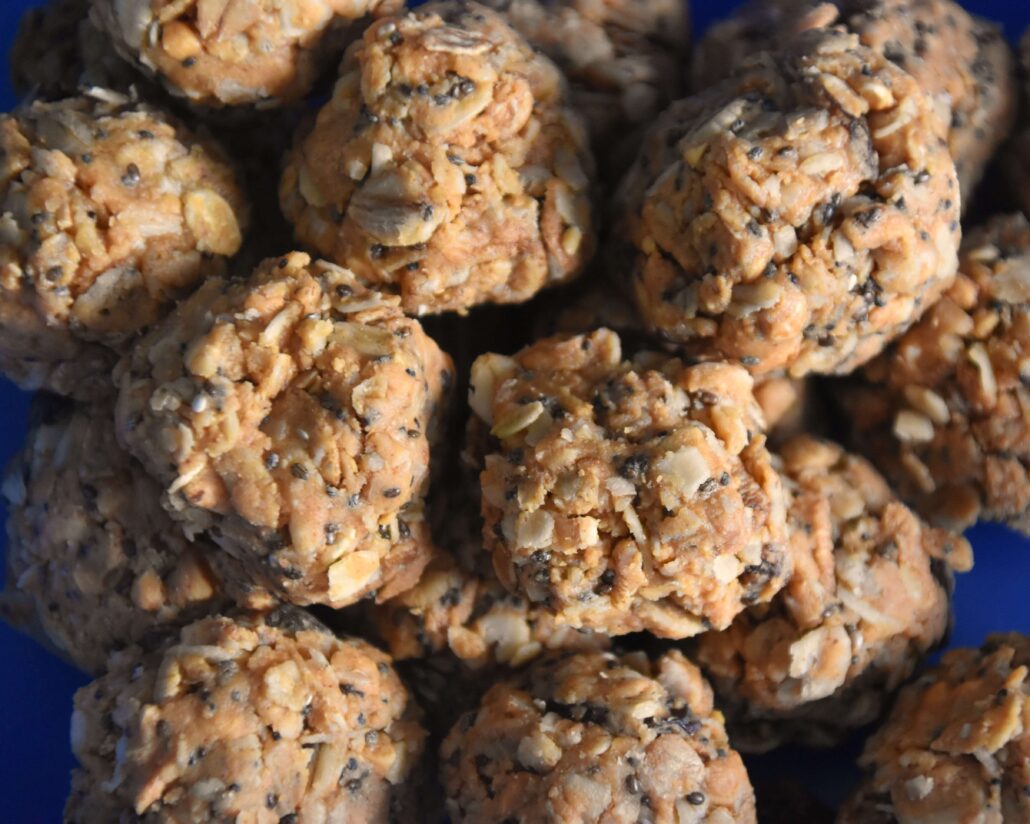
P.S.: If you want to read more about both the health and environmental benefits of a plant based diet, check back our January blog post for an easy read, or read about the EAT Lancet report.
P.P.S.: If you’re interested in more yummy recipes to help you eat more sustainably, you can check out our Fork Ranger products here.